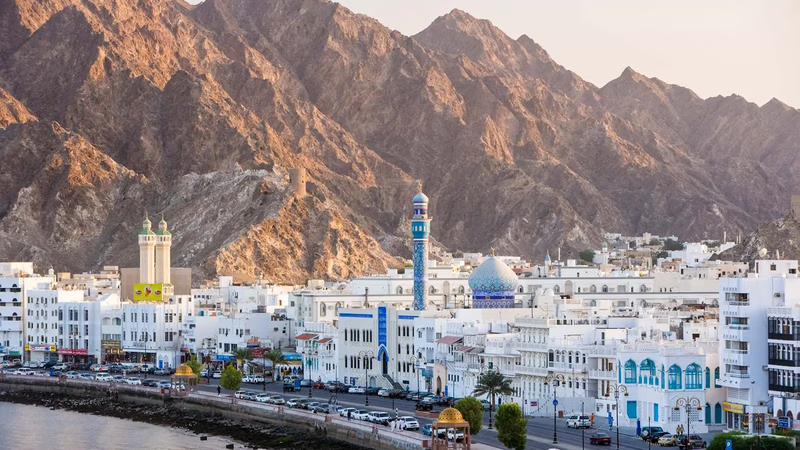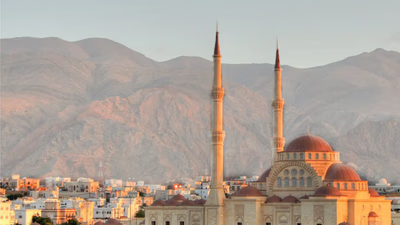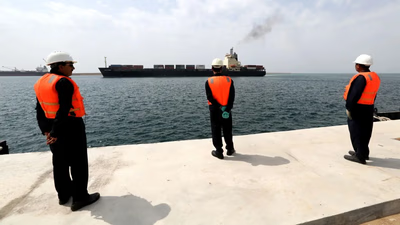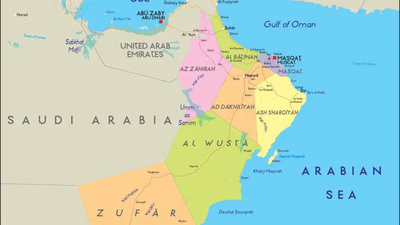
Oman: A key player in Middle East trade dynamics.
Oman is a member of the Gulf Cooperation Council, an economic and political alliance of six Arab countries in the Arabian Gulf region. The other member countries are Saudi Arabia, the United Arab Emirates, Qatar, Bahrain, and Kuwait. These nations have close ties and collaborate on various economic, security, and regional issues. Oman has maintained a longstanding and friendly relationship with the United States. The two countries have cooperated on various fronts, including security, defense, trade, and investment. Oman has served as a mediator in diplomatic efforts, particularly in regional conflicts.
Oman has historical ties with the United Kingdom, dating back to the days of maritime trade. The two countries have maintained close relations, particularly in areas such as defense, trade, and education. The British Royal Navy maintains a military base in Oman at the Port of Duqm. Oman enjoys a strong partnership with India, driven by historical, cultural, and economic ties. The two countries have a significant population of expatriate workers living in each other's countries. They collaborate on various sectors, including trade, investment, energy, and defense.
According to the World Trade Organization in 2018, China alone has 43.9 percent of Oman's export goods. Subsequently, Japan is about 7%, Taiwan with about 5 percent and Saudi Arabia, South Korea and South Korea with less importers of Omani goods. The global trade organization indicates that China has been the most important business partner of the country with about 8.45 percent of the import volume of Oman. After China, according to US countries, 7.10%, India with 6.72 percent, Japan with 5.96 percent, Saudi Arabia and Italy are the main exporter of goods to Oman. Despite the neighborhood of Iran and Oman, Iranian goods do not have much to import in its imports.
Oman has become central to the activities and presence of large business companies. China is the largest trading partner of Oman. So that many of the goods exported from Oman, China. We continue to make the most important imported and exported goods of Oman to better understand the market needs of this country. Industrial lack of industrialization has caused part of the imports of southern neighboring Iran to industrial components and machinery. To export to Oman, this area can be reviewed. The most important imported goods of Oman is listed according to recent years.
- Machines, mechanical devices and boilers
- Fossil fuels and coal, mineral oils, bitumen, different mineral products.
- Steel and iron products
- Plastic products
- Dairy and meat products, egg birds, honey
- Electrical equipment and audio and video
- Pearls and precious stones, precious metals
- Organic chemicals
- Ship, boat and floating structures
- Handicrafts
Oman's country has a desirable geographic location as well as access to the Indian Ocean, becoming one of the regional and economic poles of the region. For this purpose, with long-term planning intends to reach its intended goals. In recent years, investment and infrastructure development in the country has increased sharply, and the export of construction materials to Oman has been associated with unprecedented growth.
The construction of new economic areas and industrial settlements, the creation of urban and urban infrastructure in Oman has grown. With the growth of construction infrastructure in the country, imports of building materials such as cement and iron are strongly felt, and many countries are active in this area. Exports of construction materials to Oman from Iran also grow high and cement exports from Iran to Oman continuously underway. Iranian traders are very active in exporting other products such as construction of construction stone to Oman and iron export in this area.
Oman has been actively developing its relationship with China in recent years. China is an important economic partner for Oman, with investments in infrastructure projects, such as the development of ports and industrial zones. The two countries also collaborate on trade, energy, and connectivity initiatives. Oman has maintained cordial relations with Iran, its neighbor across the Strait of Hormuz. The two countries have collaborated on various issues, including regional stability, trade, and economic cooperation. Oman has a friendly and cooperative relationship with Pakistan, marked by cultural ties and economic cooperation. The two countries collaborate on trade, investment, and labor migration.
-

Oman is predominantly an Islamic country, with the majority of its population practicing the Ibadi sect, known for its moderation and tolerance. Arabic is the official language, but English is widely spoken, especially in urban areas. Other languages such as Baluchi and Hindi are also common due to historical ties and trade. The cultural practices of Oman reflect its Islamic heritage, with traditional clothing like the Deshdashe for men and hijabs for women being prevalent. Understanding Omani customs is essential for visitors to enhance communication and appreciation of local traditions. The coexistence of various Islamic sects, including Shiites and Sunnis, contributes to a rich cultural tapestry where significant religious occasions are observed collectively. This cultural insight is vital for those engaging in trade or business networking in Oman, as it fosters better relationships with local partners. The country"s unique blend of tradition and modernity makes it an attractive destination for both tourism and commerce. "
-

Exporting goods to Oman requires meticulous documentation, including a commercial invoice, packing list, bill of lading, and certificate of origin. Each product must be classified under a specific HS code to determine applicable customs duties and regulations. It is crucial to identify and declare the correct HS code when exporting. Oman has strict regulations regarding prohibited and restricted items, which may include narcotics, weapons, and counterfeit goods. Certain goods may also require export permits or licenses, particularly those related to sensitive technologies or military equipment. Engaging a customs broker or freight forwarder experienced in Omani regulations can facilitate compliance with customs procedures. Oman boasts several key ports such as Qaboos Port and Sohar Port, which are vital for trade operations. The average customs tariff for agricultural exports is around 4.
7%, with some commodities exempt from duties. Additionally, value-added tax (VAT) applies to most goods in Oman. Businesses looking to streamline their operations can benefit from the Authorized Economic Operator program that expedites customs processes for compliant companies. Proper packaging and labeling according to international standards are essential for successful exports.
-

Oman, located on the southeastern coast of the Arabian Peninsula, shares borders with the UAE, Saudi Arabia, and Yemen. Its capital, Muscat, is a vibrant city known for its rich history and cultural attractions. The geography of Oman features rugged mountains, vast deserts like the Wahiba Sands, and a stunning coastline along the Arabian Sea. Muscat serves as a key maritime hub with Port Sultan Qaboos facilitating trade and tourism. The city blends traditional charm with modern developments, offering attractions such as the Sultan Qaboos Grand Mosque and Royal Opera House. Oman"s climate is characterized by hot summers and milder winters, with high humidity along the coast. The local culture is deeply rooted in tradition, reflected in its cuisine and hospitality. Oman actively promotes tourism to showcase its natural beauty and heritage, making it an appealing destination for travelers seeking adventure and cultural experiences. "
-

Oman is strategically positioned within the Gulf Cooperation Council, collaborating closely with Saudi Arabia, UAE, Qatar, Bahrain, and Kuwait on economic and security matters. Its relationships extend globally, notably with the United States and the United Kingdom, focusing on trade and defense. China stands out as Oman"s largest trading partner, accounting for a significant portion of both exports and imports. Other key partners include India, Japan, and Saudi Arabia. Oman’s import landscape features machinery, fossil fuels, steel products, and food items. The country is enhancing its infrastructure to boost trade capabilities and attract foreign investment. Recent years have seen a surge in construction-related imports as Oman develops new economic zones. Iranian traders are also active in exporting construction materials to Oman.
The nation’s geographic location near the Indian Ocean positions it as a vital regional trade hub. Oman"s proactive approach to fostering international partnerships aims to strengthen its economic standing in West Asia.
-

Oman"s climate is characterized by extremely hot summers, with temperatures often exceeding 40°C (104°F) in coastal areas and even higher inland. The hottest months are June, July, and August, with minimal rainfall and high humidity along the coast. Winters are milder, ranging from 20 to 30°C (68 to 86°F) during the day, with cooler nights. Muscat experiences very little annual rainfall, averaging about 100 mm (4 inches), primarily from December to April. Dust storms can occur during summer months due to northerly winds. Oman"s geographical location near the equator contributes to its hot climate, which can deter migration compared to cooler countries. However, Oman has diversified its economy by reducing oil dependence and enhancing tourism and fishing industries. Coastal areas benefit from the moderating effects of the Arabian Sea and Gulf of Oman, leading to more pleasant temperatures than the interior regions. The southern region of Dhofar experiences a unique monsoon season known as Khareef from June to September, bringing significant rainfall and transforming landscapes into lush greenery.





